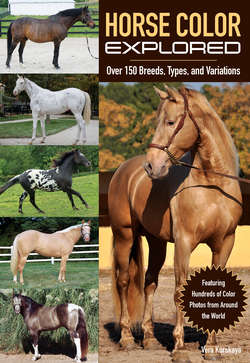Читать книгу Horse Economics - Vera Kurskaya - Страница 16
На сайте Литреса книга снята с продажи.
SO…WHAT’S SO IMPORTANT ABOUT GENES?
ОглавлениеThe DNA sequence of an organism and the presence or absence of proteins that code for certain traits is called genotype; their external manifestation (the organism’s observable traits and characteristics) is phenotype. Most multicellular organisms obtain half of their chromosomes and genes from each parent. Horses have 32 pairs of chromosomes for 64 in total, and each gene normally exists in the same place on the same chromosome—this location is called the locus. The locus is the physical site on the chromosome where one form of a gene can be found. The different forms of genes that determine possible phenotypes are known as alleles. The alleles for a gene normally will be found in the same place on a chromosome from one parent as on the same chromosome from the other parent. As one locus is paired with another locus, the horse has two allelic genes matched from the series of alleles possible for a specific characteristic.
Alleles may be represented by a pair of letters: one letter denoting the allele donated by one parent and a second letter indicating the allele contributed by the other parent. If both alleles from both parents are identical, the animal has a homozygous genotype with two identical alleles at this locus (for example, AA or aa), but if they are different, then the individual is heterozygous (Aa or aA). When one of the alleles in a heterozygote completely determines the phenotype even when the second allele is present, the suppressing allele is said to be dominant and the suppressed allele is recessive. This phenomenon is called complete dominance. The completely dominant allele is designated by a capital letter (A), and the corresponding recessive allele is designated by a lowercase letter (a). In this scenario, the individual with the genotype “AA” has the same phenotype as individual with the genotype “Aa”—the recessive gene is hidden. But, while it doesn’t “show” in the individual, it could emerge as observable in offspring. This plays an important role in the probabilities of the inheritance of any trait.
When individuals with the genotype “AA” and “Aa” are phenotypically different, and the trait encoded by allele “A” is more weakly expressed in the heterozygous “Aa” individual than in the homozygous “AA” individual, then the allele “A” is designated as incompletely dominant. In this case the heterozygous individual has a phenotype that can be an intermediate phenotype (that is, an “average”) between individuals with the genotype “AA” and “aa.”
